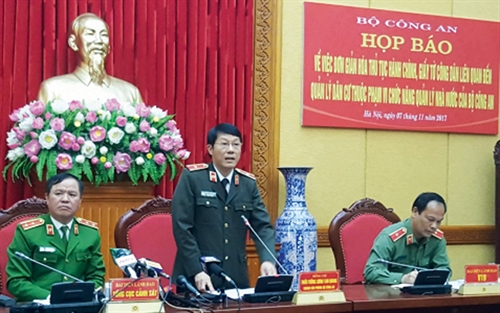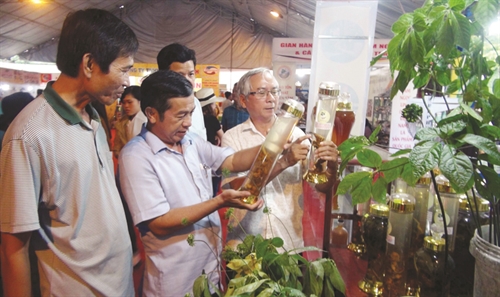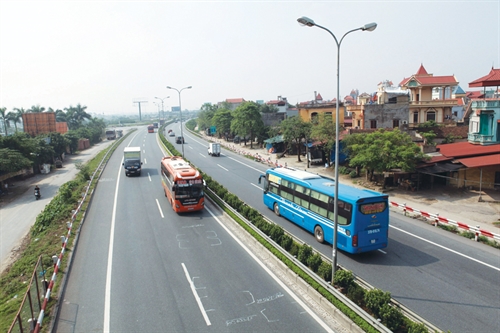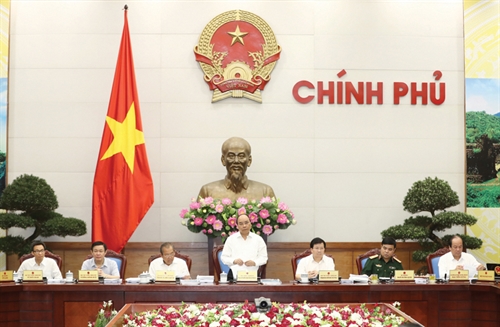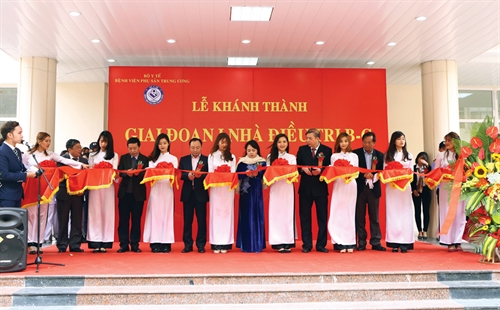Many provincial departments could be consolidated or merged in keeping with the Government’s determination to streamline the administrative apparatus, according to a draft decree unveiled this month by the Ministry of Home Affairs (MOHA).
If the draft, which is designed to replace Decree 24 of 2014 on the organi-zation of specialized agencies under provincial-level People’s Committees, is approved, the number of specialized agencies under provincial administrations nationwide would be cut by 46-88.
The MOHA puts forth three options for the framework number of provincial departments in each locality.
Under the first option, Hanoi and Ho Chi Minh City would have no more than 20 provincial departments, while the remaining localities would have between 17 and 19 specialized agencies. If this option is chosen, the number of provincial agencies all over the country will drop by at least 46.
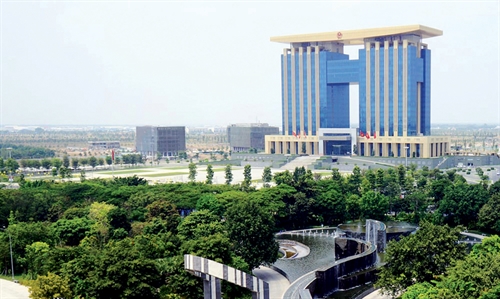 |
| Public Administration Center of Binh Duong province__Photo: Internet |
As per the second option, the number of specialized agencies under the Hanoi and Ho Chi Minh City People’s Committees would not exceed 20, similarly to the first option. But for the remaining localities, the figure would be 17-18. If taking this option, the country would see a decrease of at least 88 in the number of provincial departments.
The third option allows localities to decide on the number of their specialized agencies, which, however, must not exceed the existing one.
The MOHA backs the first option, saying that it would be a gradual reorganization process, avoiding sudden change.
Former Vice Chairman of the National Assembly’s Law Committee Le Minh Thong pointed out that the formulation of the draft decree is a move to implement the policy on streamlining the state apparatus.
“Obviously, there are firm grounds for these proposals,” Thong was quoted by VOV online as saying.
“When carrying out an oversight of the implementation of laws concerning the organization of state agencies during the 2011-16 period, we realized that the state apparatus could be further streamlined and rearranged to improve its operational efficiency and effectiveness. This move would be more than reducing overlaps in the functions of state agencies but help increase interdisciplinary coordination in state management, thus meeting requirements of the ongoing administrative reform,” he said.
What provincial departments would be merged?
Of the existing 21 departments in each province or centrally run city nationwide, the four departments of justice; natural resources and environment; labor, war invalids and social affairs; and health would remain untouched. Meanwhile, the consolidation, merger or reorganization of the remaining 17 provincial departments would be decided by provincial administrations depending on their local conditions.
Specifically, 10 provincial departments, namely planning and investment; finance; transport; construction; agriculture and rural development; industry and trade; education and training; science and technology; culture, sports and tourism; and information and communications, could be either maintained or consolidated as decided by provincial People’s Councils.
Meanwhile, the provincial department of urban planning and architecture (only set up in Hanoi and Ho Chi Minh cities); the department of foreign affairs; the department of tourism; and the committee for ethnic affairs could be kept or merged into other agencies, the MOHA proposes.
Another key proposal is the pilot consolidation of the provincial department of home affairs with the organization commission under the provincial Party Committee, and the provincial inspectorate with the Party’s inspection commission. Meanwhile, the provincial People’s Committee Office, the Office of the National Assembly Deputies’ Delegation and the People’s Council Office would be put together into a body called provincial-level administration office. However, this move will require revision of the Law on Organization of Local Administration.
Commenting on the MOHA’s proposed plan, Thong said it was too soon to assess which was the optimum option.
“The Ministry of Home Affairs should hold extensive public consultations according to the process set out in the Law on Promulgation of Legal Documents before submitting its plan to competent authorities for decision”, he said.
Former Deputy Minister of Home Affairs Thang Van Phuc, in an interview with VNExpress newswire, said the proposal of his former agency was “positive and necessary”.
“The State would put itself in a difficult situation, delay the handling of affairs for citizens and businesses and hinder societal progress if still maintaining administrative agencies with overlapping duties,” Phuc commented, adding that streamlining the state apparatus is “a job to be done in a determined manner.”
Assessing the MOHA’s proposal for local administrations to decide whether to maintain or merge their specialized agencies, Phuc said it was a two-faceted approach. On the one hand, it upholds the autonomy and self-accountability of local administrations in materializing the Party’s resolutions and State’s policies according to local conditions. On the other hand, there might be some provincial administrations that did not want to change anything.
“There should be a body in charge of monitoring the entire process,” Phuc said, adding that responsibilities of agencies and their heads should be enhanced.
According to Phuc, the state apparatus reform would inevitably affect numerous officials and civil servants. However, the state management system must accept “pain” in order to adopt a new modern governance method, he stressed.
Grounds for merger
The MOHA, in its report circulated together with the draft, affirmed that the merger of provincial departments aimed to end the existing overlaps in their functions and duties and make these agencies operate better.
The ministry said as the functions and responsibilities of the provincial departments of planning and investment and finance are interrelated, they should be combined to create a new body assisting local administrations in managing planning, investment, finance, budget, etc. One expected result is that local socio-economic development plans made by this body would be more suitable to the local budget balancing capacity.
Similarly, the consolidation of the two provincial departments of construction and transport would form a single agency in charge of two interrelated areas, namely urban construction and transport infrastructure development. This would help solve existing problems in urban infrastructure management, according to the report.
Since some provinces and cities are experiencing vigorous urbanization and economic restructuring, the work of state management of agriculture and rural development in these localities has diminished. Therefore, according to the MOHA, the provincial department of agriculture and rural development should be combined with the provincial department of industry and trade into a new department devoted to industry, agriculture and trade.
In small localities with sparse population where press, publication, printing, post and telecommunications activities are not many, the provincial department of information and communications and that of culture, sports and tourism should also be combined.
As for the consolidation of the science and technology department and the education and training department, the MOHA pointed out that these two sectors are closely interrelated, and it would be better if they are managed by a single agency.
In an interview with VOV online, Le Thanh Van, a member of the National Assembly’s Committee on Financial and Budgetary Affairs, said this was an issue concerning the rearrangement of a specific administrative unit.
“The proposal of the Ministry of Home Affairs, I feel, could end up retaining the same number of staff and agencies as the departments merge, without requiring departments to seriously review their different functions and assigned duties in order to eliminate redundancies,” he worried.
“The merger plan is aimed at streamlining the state apparatus. But more importantly, we should ask questions like, are the functions of these departments appropriate,” Van said.- (VLLF)


